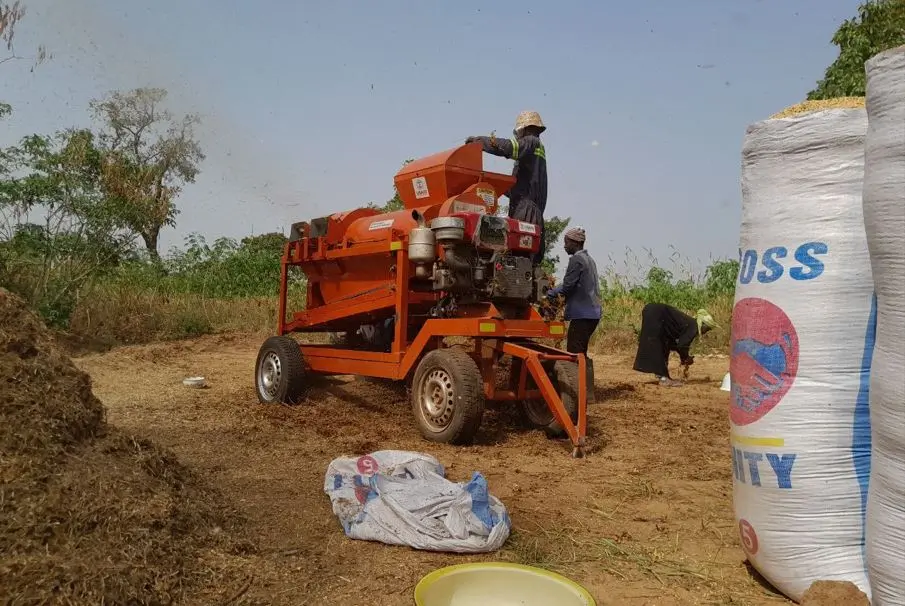As September rolls in, farmers across Ghana know that the major harvest season for maize, soybeans, and rice cereals is just a few weeks away. With October around the corner, it’s time to take those final steps that will make all your hard work pay off. This is a crucial period to not only tend to your crops but also to make sure you’re fully prepared to bring in a successful harvest. Here’s a checklist of how you can get ready:
1. Caring for Your Crops
Your crops may be almost ready, but they still need your care.
- Keep Weeds at Bay: Weeds can compete with your maize or cereals for nutrients, water, and light. Ensure that the field is kept free from weeds, especially during this crucial stage. Check out this video to learn how to properly manage weeds.
- Check for Insects: Keep an eye out for pests like stem borers, armyworms, and aphids that can damage the crops. Inspect the leaves, stems, and cobs for any signs of infestation.

Gram pod borer in Soya bean: Image Credit: Agriplexindia.com
- Watch for Diseases: Look for symptoms of diseases such as maize streak virus, rust, or leaf blight. Yellowing, wilting, or unusual spots on the leaves could indicate a problem.
2. Get Ready for the Harvest
A successful harvest doesn’t just happen; it’s the result of good planning. Now is the time to check that your tools and equipment are in good shape. Do you have enough hands to help with the harvest? How about getting things like sacs (recommending a hermetic storage sac), grain moisture meter, and other necessities ahead of time to avoid price hikes during peak seasons. If not, start making arrangements.
3. Secure a Multi-Crop Thresher
One of the smartest moves you can make right now is to ensure you have access to a multi-crop thresher. If your crops sit too long in the field after they’re ready, they can spoil, or you could lose valuable grains.

A multi-crop thresher can make all the difference. It quickly separates the grain from the chaff, saving you days of hard labor and reducing the risk of spoilage. Threshing on time not only helps you avoid losses but also improves the quality of your grains, making them more suitable for storage, food processing, or selling at a higher price. Remember, well-threshed grains often fetch a premium in the market. Check out SAYeTECH’s multi-crop thresher if you want to buy one.
4. Prepare Your Storage and Market Plan
As you get closer to harvest, start thinking about where and how you’ll store your crops. Proper storage is crucial to keep your harvest in top condition. Make sure your storage areas are clean, dry, and secure. And if you plan to sell your crops, now is the time to explore your market options. Knowing where your produce is headed will help you get the best prices and avoid last-minute stress.
5. Stay Connected with Your Farming Community
Lastly, don’t underestimate the power of staying connected. Talk to fellow farmers, engage with extension officers and farmer groups, and keep learning about the latest agricultural tips and market trends. Sharing knowledge and experiences can give you valuable insights and help you overcome challenges together.
Wrapping it up
As we approach the harvest season, your focus should be on giving your crops the final care they need, getting your resources in order, and making smart choices that will lead to a bountiful yield. By securing a multi-crop thresher, you’ll be taking a big step toward reducing losses and improving the quality of your harvest. At SAYeTECH, we’re here to support Ghanaian farmers with the tools and solutions you need to succeed. Let’s work together to make this harvest one to remember!
For any enquiries or support, kindly reach out to us via admin@sayetech.io or +233 20 987 9370
You Have It!
